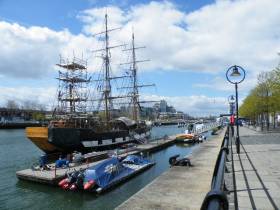Displaying items by tag: Replica Famine Museum ship
Jeanie Johnston: Is the Tallship Worth Its Cost?
#tallships - The Dublin Inquirer poses the question is the Jeanie Johnston worth its cost?
It is since 2015 that Dublin City Council inherited the Jeanie Johnston from the Dublin Docklands Development Authority (DDDA) and that has seen the council pump more than €200,000 into repairs for the replica famine ship.
Having cost over €15 million to build the ship’s value has now sunk to €400,000, according to Dublin City Council Administrative Officer Derek Kelly – and officials say that more repairs are needed.
Some councillors are unsure whether more should be spent to save the historical tourist attraction (see recent plans to relocate), or if it should be cut adrift.
An Inheritance
It cost €15.5 million to build the replica ship, a price-tag that was largely covered by central government, according to a council spokesperson. Work started in 1993 and was completed in 2002.
In 2005, the DDDA bought the ship for €2.7 million from Kerry County Council, Tralee Town Council, and food company the Kerry Group, they said.
The ship was part of the €8 million parcel of assets handed over to Dublin City Council from the DDDA after it wrapped up in 2015.
But in the decade between the time when the DDDA bought it, and the agency’s demise, the ship was damaged.
Maintenance of the Jeanie Johnston was, essentially, a low priority for the authority and it was left unused for a number of years, according to the council spokesperson.
To read further on the ongoing work to repair the tallship and more click here.





























































